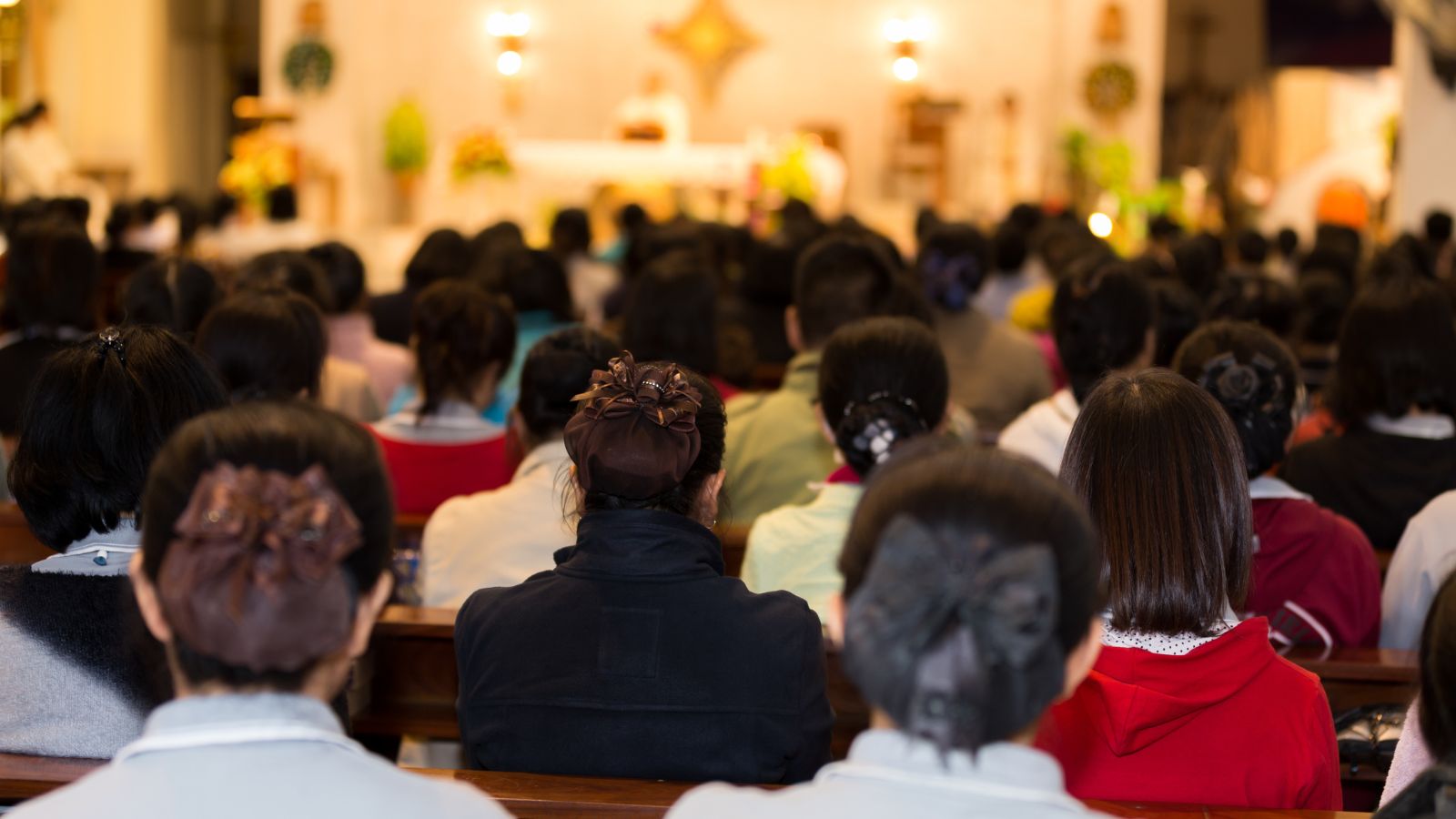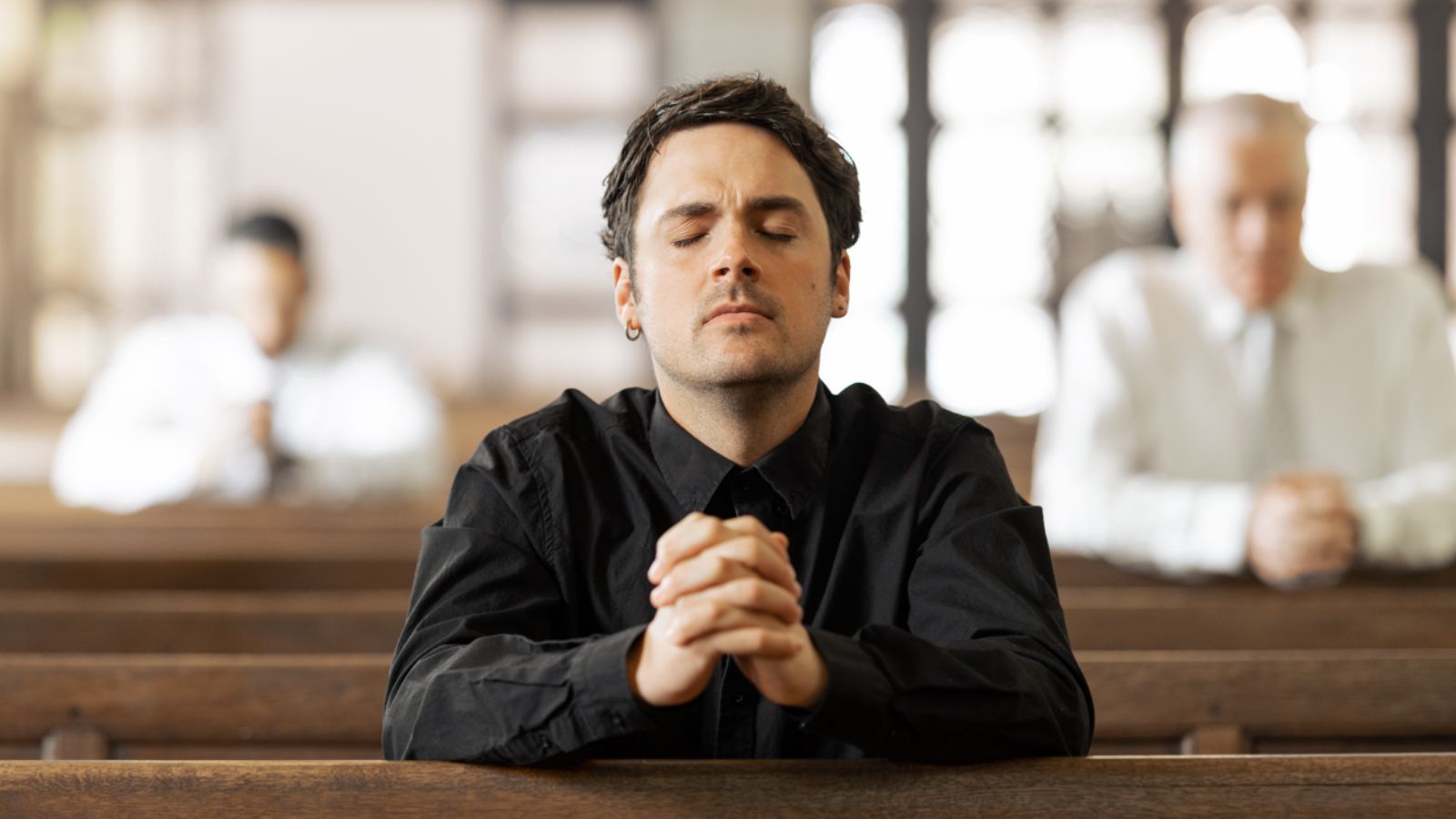Catholicism holds a rich tapestry of beliefs and practices, some of which are not explicitly detailed in the Bible but are derived from Sacred Tradition and the Magisterium (the Church’s teaching authority). Here are 20 such beliefs that don’t come directly from the Bible.
The Papacy

The belief in the Pope as the successor of Saint Peter, the Bishop of Rome, and the leader of the global Catholic Church is rooted in tradition and interpretations of passages like Matthew 16:18–19, but the explicit office of the Pope is not detailed in the Bible.
Transubstantiation

An example of a doctrine followed according to Tradition (and Scripture) is the belief in the Real Presence of Christ in the Eucharist. The specific understanding that the bread and wine become the actual body and blood of Christ during the Eucharist is articulated through Church doctrine, drawing on biblical passages (e.g., John 6:51–58).
The Assumption of Mary

Catholics’ belief that Mary, the mother of Jesus, was assumed body and soul into heaven is not found in Scripture but is a dogma proclaimed by the Church, reflecting the sinlessness and special role of Mary in salvation history. Roman Catholics are taught that the Virgin Mary remained a virgin after Jesus was born and that He had no brothers and sisters. Catholics also engage in more praising of Mary than of Jesus Christ himself.
The Immaculate Conception

The belief that Mary conceived without original sin is based on theological deduction from Scripture (e.g., Luke 1:28) and Sacred Tradition. The Immaculate It is one of the four Marian dogmas of the Catholic Church. Debated by medieval theologians, it was not defined as a dogma until 1854, by Pope Pius IX in the papal bull Ineffabilis Deus.
Purgatory

The Catholic Church holds that “all who die in God’s grace and friendship but are still imperfectly purified” undergo a process of purification after death, which the church calls purgatory. The concept of a purification process after death is derived from Scripture (e.g., 1 Corinthians 3:15) and Tradition.
Sacramental Grace

The belief that the sacraments confer grace ex opere operato (by the very fact of the action being performed) is a theological interpretation of Scripture and Tradition, not directly spelled out in the Bible.
Confession to a Priest

Confessing sins to a priest for absolution is based on John 20:23 and James 5:16, among others, but the detailed sacramental practice is developed in Church Tradition. Good Catholic believes Jesus himself began confession to man, stating “When His fellow Jews are scandalized by this announcement to forgive sin, their scandal is understandable: they believed Jesus to be ‘a mere man’.”
Confirmation as a Separate Sacrament

The Bible speaks of the laying of hands (Acts 8:17), but the formal sacrament of Confirmation, as distinct from Baptism, is a development of Church Tradition. While Baptism initiates the soul into the church, Confirmation seals or completes the Baptism.
Holy Orders

The threefold ministry of bishop, priest, and deacon is rooted in Scripture (e.g., 1 Timothy 3:1–13; Titus 1:5–9) but the detailed understanding of Holy Orders is elaborated in Tradition. Holy Orders is a call from God, not to be confused with a career choice or a right that anyone can invoke, according to the Catholic Diocese.
Celibacy for Priests

The Economist reports, “When a priest enters into service to God, the church becomes his highest calling. If he were to have a family there would be the potential for conflict between his spiritual and familial duties.” Priestly celibacy is based on Church discipline and Tradition, drawing on biblical passages that praise celibacy (e.g., 1 Corinthians 7:32–35), but it is not mandated in Scripture.
The Rosary

This popular devotional prayer is not found in the Bible but is a tradition that developed over centuries, incorporating biblical prayers like the Hail Mary (Luke 1:28, 42). “Roman Catholics borrowed the idea of praying with beads from the pagan religions who were already using them hundreds of years before,” according to Bible.ca.
The Canon of Scripture

The Bible itself does not contain a divinely inspired table of contents. The determination of the canon was made by the Church through councils, guided by the Holy Spirit.
Sunday Worship

The practice of gathering for worship on Sunday, the Lord’s Day, is rooted in the early Church tradition (Acts 20:7; Revelation 1:10). Sunday is the day of Christ’s resurrection, rather than a biblical command to shift the Sabbath from Saturday.
The Liturgical Year

The organization of the Church’s year-round seasons like Advent, Christmas, Lent, and Easter is based on events in the lives of Christ and the saints, developed through Tradition. These cycles are a result of the Second Vatican Council, which ordered a change in the Sunday readings at Mass so that Catholics would become more familiar with the text of the Bible.
The Veneration of Saints

Asking saints to intercede with God on our behalf is supported by the understanding of the Communion of Saints (Revelation 5:8; 8:3–4) but is elaborated in Church Tradition. “We honor the saints because they are the friends of God, princes of the heavenly court, and benefactors to ourselves; also because we obtain great graces from God through venerating them.”
The Use of Images in Worship

Idolatry in the Hebrew Bible is defined as the worship of idols or images, as well as the worship of polytheistic gods by the use of idols or images, and even the use of idols in the worship of Yahweh (God). The use of religious images for veneration is justified through Tradition and the understanding of the Incarnation, despite the lack of a biblical mandate.
Indulgences

The practice of indulgences, or remission of temporal punishment for sins, is rooted in the Church’s authority to bind and loose (Matthew 16:19) but is not explicitly described in Scripture. The granting of indulgences was predicated on two beliefs. In the sacrament of penance, it did not suffice to have the guilt of sin forgiven through absolution alone; one also needed to undergo temporal punishment.
Church Authority

The authority of the Church to teach, govern, and sanctify the faithful is implied in Scripture (Matthew 18:18; Acts 15) but is more fully articulated in Tradition. The scope of this authority is limited to things that are essential to salvation: faith, morals, and worship, meaning the sacraments and liturgy.
Infant Baptism

The Bible primarily presents baptism as a personal choice made by individuals who have consciously accepted Jesus Christ as their Savior. The practice of baptizing infants is inferred from Scripture (e.g., Acts 16:15, 33), along with the understanding of Baptism being the new circumcision, but is more explicitly a tradition of the Church.
The Anointing of the Sick

James 5:14–15 mentions praying over the sick and anointing them with oil. However, the sacramental understanding and practice of Anointing of the Sick have been developed in Church Tradition.
Read More: 17 Religious Facts People Get Wrong All the Time

Religious beliefs and practices are often misunderstood, leading to common misconceptions. Some are just too general, others are downright out there. So, we’ll be correcting 17 widely circulated ‘facts’ about world religions.
17 Religious Facts People Get Wrong All the Time
Why People Aren’t Religious Anymore: 15 Simple Reasons

As society evolves, so does our approach to spirituality. This article looks at the subtle yet profound shift from traditional religious adherence to a more personal, evidence-based belief system.
Why People Aren’t Religious Anymore: 15 Simple Reasons
17 American Attractions That Not Even Americans Want to Visit

The United States of America—land of the free, home of the brave, and the location of some of the most ‘unique’ tourist attractions you’ll ever lay eyes on.
Get ready to chuckle, scratch your head, and maybe even facepalm as we look at 17 American attractions that not even Americans think are worth visiting.
17 American Attractions That Not Even Americans Want to Visit
20 Things We Did When We Were Young That We Regret Now

It’s easy to say hindsight is 20/20, but what advice would you really give your younger self? Here are 20 things that most people did when they were young that they regret today.
20 Things We Did When We Were Young That We Regret Now
17 Things That Used to Be Highly Respected But Isn’t Anymore

Many things in the world used to be well-respected before turning into complete jokes for various reasons. An internet survey recently asked people, “What is something that was once highly respected but is now a complete joke?” Here are the top 20 answers:
17 Things That Used to Be Highly Respected But Isn’t Anymore

